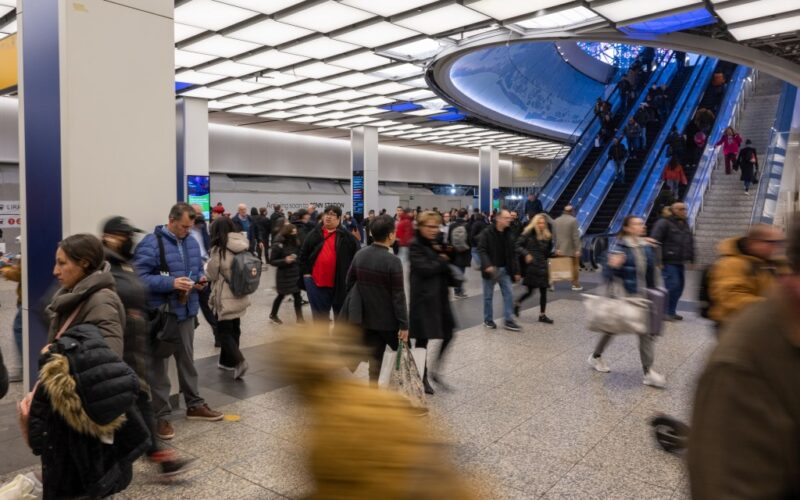Penn Station handles 600,000 daily subway and commuter rail riders — more passengers than LaGuardia and JFK airports combined. Yet, despite being one of the most vital transportation hubs in North America, it remains one of the most frustrating.
With the federal government now in charge of the reconstruction of Penn Station, and the Gateway Program charging ahead full steam, we have a once-in-a-generation opportunity to finally have the modernized, safer, more accessible transit hub on Manhattan’s West Side that we’ve deserved since they tore down the original edifice.
Penn Station is an essential link in our regional transportation network, and modernizing it is long overdue. A reimagined station will reduce delays, improve reliability, and lay the groundwork for expanded service across the region. The project will create thousands of good-paying union jobs, boost economic activity, and better connect surrounding communities from New Jersey to Long Island.
But no matter what the plan is for Penn itself, there is one additional connection the new station will need to make to put the icing on the cake. It’s a way to link Penn’s six subway lines, the Long Island Rail Road (LIRR) and NJTransit (NJT) (and soon Metro-North Railroad) as well as Amtrak, with Herald Square’s eight subway lines and the PATH train. And it’s been right under our noses — and feet — all along.
Right now, getting from Penn to Herald Square means fighting through some of the most congested sidewalks in America, rain or shine. But there’s a long-forgotten stretch of tunnel beneath 33rd St. that once helped power New York’s daily rhythm.
The Gimbels Passageway, an 800-foot pedestrian tunnel shuttered since the 1980s due to safety concerns and maintenance challenges, once linked the Seventh Ave. lines to the Sixth Ave. lines. Some signage is still even visible, if you know where to look.
Reopening this passage would eliminate an estimated 100,000 daily surface-level transfers. No more going upstairs and crossing a busy street just to complete your journey. Have you seen Seventh Ave. after a Knicks game? Why make people play Chutes & Ladders when they can just continue walking in a straight line underground? Commuter flow improves instantly with one move.
It would be a small project by the scale of Penn’s broader redevelopment, but with outsized benefits. It’s a smart, near-term investment that complements the larger expansion and modernization effort already underway. And the business case for reopening Gimbels is compelling: Every minute saved in commute time translates to measurable economic value. The Regional Plan Association estimates that transit delays cost the New York metro area $20 billion annually in lost productivity.
Reopening this corridor is a clear reminder of what’s possible when we build infrastructure that meets the needs of New Yorkers. And it’s a case study in why Penn’s long-overdue redevelopment must move forward.
Improvements like the LIRR Corridor have helped dramatically, but many parts remain dark, congested, and disjointed. Underground passageways were once a core part of how Penn Station facilitated New Yorkers’ safe and efficient movement through the city. But budget crunches and safety concerns shuttered them in a very different New York than we know today. It’s now clear those decisions were shortsighted.
We’ve reversed bad calls before, like reopening the High Bridge after 45 years, and other examples of this already exist. Grand Central Terminal still boasts a network of pedestrian tunnels that connect commuters to buildings across Midtown. The Hilton Passageway in Penn Station still links Amtrak and LIRR riders to the No. 1, 2, and 3 subway lines. These kinds of walkable connections make a complex city function better.
But the window for action is closing fast. Federal funding for Penn Station won’t last forever, and construction costs only increase with delays. The MTA and Amtrak are already coordinating major renovations. Adding Gimbels to the scope now makes financial sense — retrofitting it later would cost exponentially more.
This isn’t about nostalgia for old New York. It’s about smart infrastructure investment that pays dividends for decades. The tunnel exists. The engineering is straightforward. The only question is whether we have the vision to connect the dots.
The contractors, engineers, and skilled workers whom the New York Building Congress represents are ready to tackle this project. Commuters deserve safe, weather-protected connections. All the pieces are aligned, except for political will.
Reopening the Gimbels Passageway won’t solve every Penn Station problem, but it’s the kind of practical, high-impact investment that separates cities that adapt from cities that stagnate. The tunnel is there. The need is clear. Let’s dig in.
Scissura is president & CEO of the New York Building Congress.








